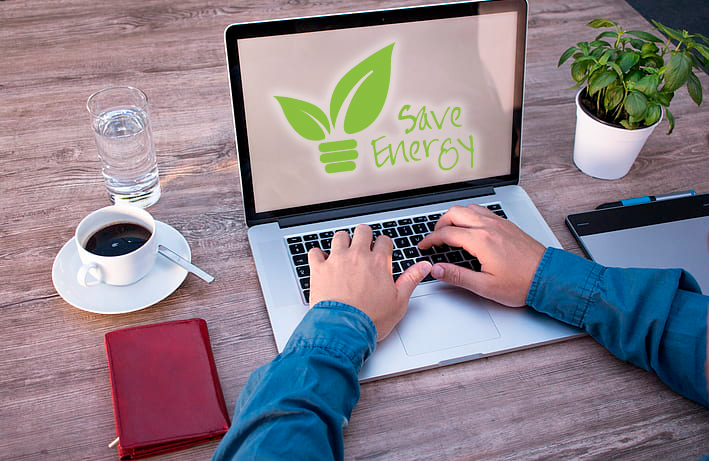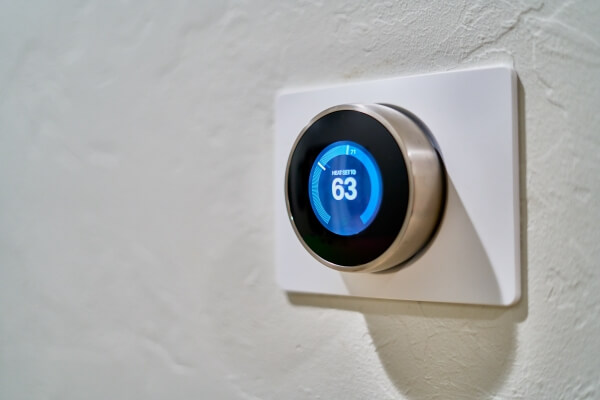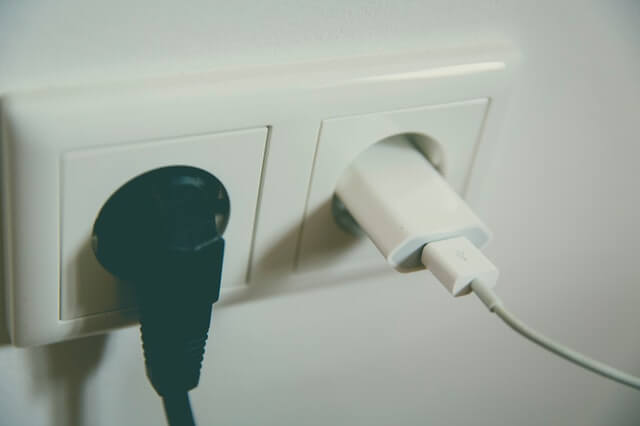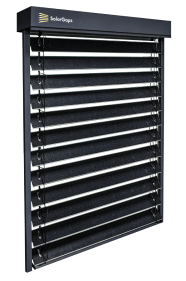How to save energy when working from home

A lot of us have found ourselves working from home in 2020, and it’s not unlikely we’ll continue to be able to work from home in the future. Once the genie is out of the bottle, there’s no sense putting it back in. There are distinct advantages to work-from-home arrangements, some of which have a direct impact on the environment and climate change.
No need to drive to work? Less carbon emissions! Fewer people in the office? Less air conditioning required! We can double down on these advantages, too, by choosing eco-friendly ways to work from home. Saving energy doesn’t just help you protect our planet – it saves you money, too.
We’re going to start with some tips that are free, move on to things that will cost you a bit of money, then end on some investments that will bring about excellent returns over time:
Save Energy for Free (That’s Free Money)
When you work away from home, you can save money on heating and cooling by adjusting the temperature while you’re away, and bringing it back to comfortable levels when you get back. That’s most easily done with programmable or smart thermostats.

Unfortunately, working from home makes that an impossibility. You should instead opt to leave your home a bit hotter in the summer, and a bit cooler in the winter. Most of the time, you can adjust your thermostat one or two degrees without feeling the difference. Want to save even more? Dress appropriately for the season! Huddle up with a sweater and some hot tea in the winter, and opt for a t-shirt and shorts in the summer. Not being in the office means no dress code, after all!
Find out how to save on your AC in the summer with SolarGaps
You’ll also want to slay vampire power (also known as standby power). Basically, many electronic devices still draw power even when not in use, as long as they’re plugged in. For example, TVs need power to know when they’re being turned on via remote, and microwaves need power to display the time.
Unplug devices when they’re not in use, or use power strips (timed or manual) that you can turn off with the flip of a button. This is especially important if you’ve set up a home office featuring some new devices. When you’re done work for the day, turn off everything in your office to save energy.

While we’re talking about home offices, it’s important to mention that you can use power management features to automatically dim the light on your monitor and put things into sleep mode when not in use (in case you forget to turn them off). Small reductions to your power usage like this can pay off over time, and at no cost to you.
One last trick: take advantage of sunlight. Try to work in a space with big windows, so you can illuminate your workplace without using any electricity.
Keeping Things Cozy
Heating and cooling are two of the most important energy costs for any home. When you’re working from home in the winter, you’ll want to keep your space cozy, but as mentioned above, that can come with significant energy costs.
The solution? Make sure your home is airtight, so all of that heat you’re generating doesn’t escape into the outside world. The least expensive way of going about this is to make sure you weatherstrip your doors and windows. You’ll also want to patch any holes in your building’s exterior and caulk where appropriate. Basically, keep your building envelope sealed!
Weatherstripping and envelope sealing are next to free, though you might want to get an energy audit to see where your home is leaking energy. Another great way you can improve your energy efficiency is by getting new insulation. This can cost hundreds (or thousands) of dollars, so it’s not the least expensive thing on the planet, but the return on investment is generally quite good.
Going High Tech
Now we’ll look at some items with a higher upfront cost. Upfront is doing a lot of heavy lifting here – you should look at these improvements as investments. The longer you stay in the same home (and the longer you work from home), the more benefits you’ll see. When you sell your home, these items may also increase in value, so you’re getting more than just energy efficiency!
The first items on the list are high-efficiency heating and cooling systems. That might mean a high-efficiency gas furnace, a heat pump, or a high-efficiency air conditioner. A great place to start, if you’re looking for energy efficient models, is the Energy Star website. While you’re at it, you can look for other energy efficient appliances. You might find yourself doing a lot more dishes when you’re not going out to eat, so a high-efficiency dishwasher could be a boon.
Investing in green energy is another great way to save on your power bill while working at home. Solar panels and solar blinds can generate the electricity you need for you, so you don’t need to pay the utility. What’s more, through net metering, you can get credits for energy you sell to the utility when you’re generating in excess of what you’re using.
It’s worth mentioning that solar panels aren’t exactly a DIY project. There’s an ideal place for solar panels; the way they’re angled and the direction they’re facing has a significant impact on power production. It’s important to consult with a professional before engaging in green power generation projects, so you can get the most value for your dollar.
